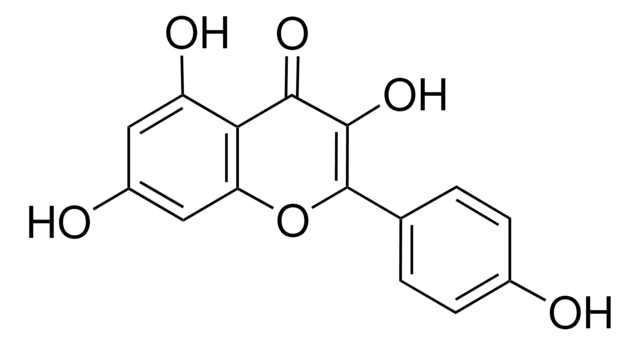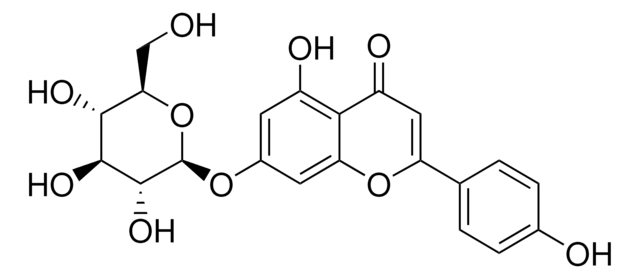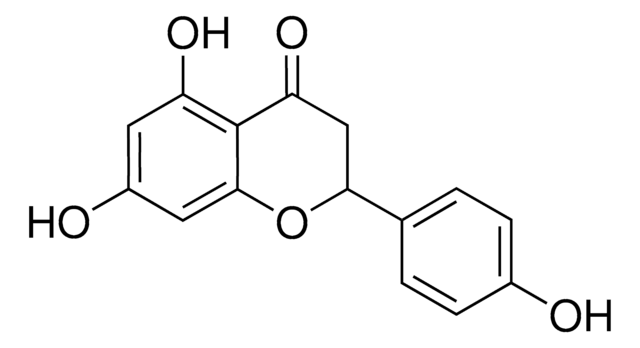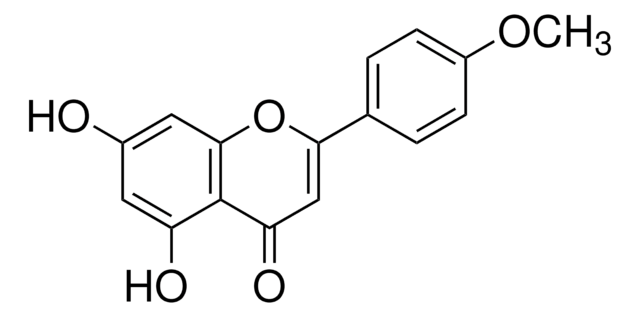10798
Apigenin
≥95.0% (HPLC)
Sinonimo/i:
4′,5,7-Trihydroxyflavone, 5,7-Dihydroxy-2-(4-hydroxyphenyl)-4-benzopyrone
About This Item
Prodotti consigliati
Saggio
≥95.0% (HPLC)
Impurezze
~2% water
Punto di fusione
>300 °C (lit.)
Temperatura di conservazione
−20°C
Stringa SMILE
Oc1ccc(cc1)C2=CC(=O)c3c(O)cc(O)cc3O2
InChI
1S/C15H10O5/c16-9-3-1-8(2-4-9)13-7-12(19)15-11(18)5-10(17)6-14(15)20-13/h1-7,16-18H
KZNIFHPLKGYRTM-UHFFFAOYSA-N
Informazioni sul gene
human ... ADORA3(140) , CDC2(983) , CDK5(1020) , CDK6(1021) , CYP1A2(1544) , ESR1(2099) , ESR2(2100) , GSK3A(2931)
mouse ... Hexa(15211)
rat ... Adora1(29290) , Adora2a(25369) , Il4(287287) , Tnf(24835)
Cerchi prodotti simili? Visita Guida al confronto tra prodotti
Descrizione generale
Applicazioni
Azioni biochim/fisiol
Confezionamento
Altre note
Codice della classe di stoccaggio
11 - Combustible Solids
Classe di pericolosità dell'acqua (WGK)
WGK 3
Dispositivi di protezione individuale
dust mask type N95 (US), Eyeshields, Gloves
Scegli una delle versioni più recenti:
Certificati d'analisi (COA)
Non trovi la versione di tuo interesse?
Se hai bisogno di una versione specifica, puoi cercare il certificato tramite il numero di lotto.
Possiedi già questo prodotto?
I documenti relativi ai prodotti acquistati recentemente sono disponibili nell’Archivio dei documenti.
I clienti hanno visto anche
Articoli
Antioxidants protect biological systems from oxidative damage produced by oxygen-containing free radicals and from redoxactive transition metal ions such as iron, copper, and cadmium.
Il team dei nostri ricercatori vanta grande esperienza in tutte le aree della ricerca quali Life Science, scienza dei materiali, sintesi chimica, cromatografia, discipline analitiche, ecc..
Contatta l'Assistenza Tecnica.








